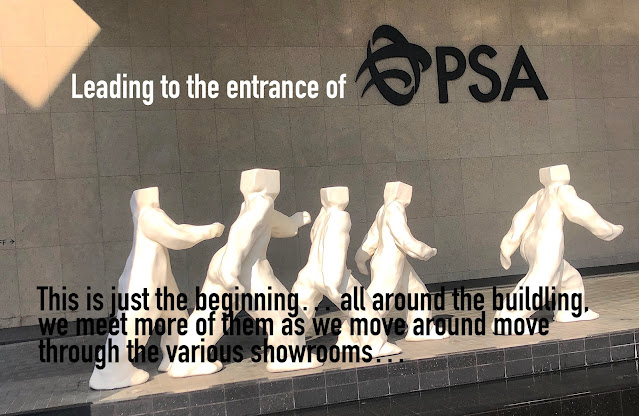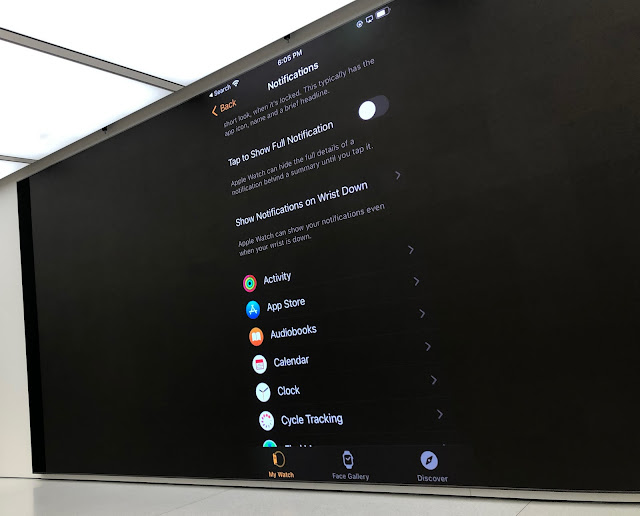Chanced upon these two books in Amazon. Pretty interesting. One of the books is "The Boy and The Box" while the other is "The Girl and The Box". The same authors (Leila Boukarim and Shameer Bismilla) and same illustrator (Barbara Moxhan). I wondered what's the difference between these two titles.
One thing, I know, for sure, these books belong to the category with few words and beautiful illustrations. The rest, i.e. what the storyline is, would be for me to discover.
The books go in a pair... but also, can be independent of each other. One interesting point is, the main character in each of the books meets each other at some points - and therefore presented a different perspective and set of emotions. Both of the same age, both in search of ... (something), their experiences are somehow quite the same, yet quite different. Haha... am I contradicting myself? Each has its own story to deliver, to tell, despite something remains constant - the voice... that authoritative voice that is most discouraging and commanding... and the box, that has an important place in both stories, somehow has the same role, that holds the.....
To fully enjoy the book and fully immersed in the mind of the 2 children, one has to put away the logical mind, the practicality...
1st touch point: When the boy and the girl met. One was curious while the other just discovered the magical use of the box...
2nd touch point: where the girl now discovered what the box could do while the boy finds his lost joy from the box he almost forgot...
Though it seems it's fine to read any of the books first as them are seemingly independent of each other), it seems that the BIG PICTURE begins with "The Boy (and the Box)"...
The stories bring us back to our long long ago childhood, that probably many of us would have forgotten what were our small child aspirations and curiosity.
It's the youngest phase of the growing up when we smell the flower and with our minds filled with wonders, and the eagerness to explore and try, carefree because there is no record of worries or concerns in the young mind. Remember, we don't know something is dangerous or unwelcoming until we experience it ourselves. That's how we learn. Isn't it? It's like when we see fire, it's just fire and something that attracts us to go closer to it... until we feel the pain and from that point, we learn that it is dangerous when we get close to it. That's curiosity.
Same for the boy, there are so many things that he would love to do - e.g. pausing to appreciate what's before his eyes for a moment... HOWEVER, the voice is always there to advise him, to make decisions for him. While he wishes to follow his heart, he feels the need to follow the voice because he believes that voice is right and things won't go wrong if he follows it. And I think, he does not want to disappoint this voice. He conformed. Each time, he needs to stomach his feeling into the box, that holds what he actually wishes to do. Yes, along the way, he expressed frustration. Why does he still choose to listen to the voice? Has he been trained to be obedient? OR is it the trust that this voice has developed within him, through past experiences.
The voice is a metaphor. Who does it represent? To many of us, it's our parents or someone who can assert great influence on us... many a time, they are the ones who tell us what we can do, we should do, or we should try, even to change our decisions... and they are usually (sometimes?) the ones who swayed us from what we wanted to try, and usually very successfully - be it in a persuasive manner or sometimes commanding - if what we wish for is against what they wanted us to do. Have we ever regretted not following their advice? I don't know... but most of the time, we believe (and trust that) they come with good intentions. As we grow older, the voice could become peer pressure (sometimes) or even the environment that we are in or the situation that requires us to choose a different option (as a decision at that point of time).
So, what do our true self do? Like the boy, each of us have a box where we store our feelings, our emotions, fear, our reactions, and sometimes, our values (and what we value) and beliefs. While it seems like we are fully obedient to the voice, there's this struggle, to manage this box inside us. Some of us may not have noticed that box and thought that we have given up these things... but it is unconsciously or subconsciously there. That sounds like the items inside the boy's box.
The darkest moment came when the boy faces the tunnel. It seems that there's not way to turn back. He mind was filled with fear and uncertainty, and hopes to seek advice or help from the voice. BUT, no help from the voice. At that juncture, he has no choice, but had to enter despite of all the fears that almost overwhelm him. I guess, at that point, he feels betrayed, being abandoned(?). OR is it because the voice feels that it's time for him to grow with lesser advice? This let go is scary - to someone who has been following and holding tightly to all the advice, with full trust.
The turning point is when the boy has reached the peak, that is, he has achieved what the voice wanted him to be. To reach the peak, he just has to follow the voice and leave the box behind so that he has all the might and means to ascend. When he reaches the top of the mountain, he voice believes that the status would bring him happiness, affirming him, "Well done!" "You should be happy".
What's significant is....He realised that... He was... empty... This is a realisation.
To us, this realisation may come at different juncture of our lives. For some, it might be in our early life. For some, it might be the point when we reach the peak of our career. For some, it might not come at all. It also depends on the circumstances. For some, the voice may fade away over time. For some, the voice remains strong. For some, we live with the "voice" that already deep-seated in us (even when it's gone already).
Was the voice wrong? I don't know. But I would not dispute its intent. That sounds familiar? Parents want to provide a safety net to their children. Very often. They do not want their children to go by the long way. They want their children to succeed and with their affordable means, they lay the path for their children. They hope their children will find interest and grow to like to - and sometimes, it was about parents trying to fulfil their own lost childhood dreams/ desires through their children. Will this become a vicious cycle?
What do we do when we realised that we have forgotten our box?
Will we, like the boy, willing to give up what he could see from the top of the mountain and roll back to find the box? Another decision to make? Listen to the Voice? OR We shall hear our OWN Voice? This time, it's our decision. We would be old and mature enough to weigh and decide when its a good time to find and reopen our box.
Have I found my box? I think yes. Though a little bit late... I'm opening up slowly... sometimes still peeking to see some of things there... while some items have already made its way out. I guess, it comes with age and timing... and I think I've made some assessment... sometimes it comes as a risk... though actually it's the amount of courage that's needed to let it out of the box....
The story of the Girl and the Box... In a similar light, the girl seeks her dream - to reach the moon. (that's when we need to put our logical mind behind us). She follows the path that she believes will lead to the moon though it could be far. She believes it is possible as long as she is focused. She came across a tree. She perceived the moon was just on top of the tree. It's within reach. And she climbed. She did not give up and saw the boy with his box. She was enlightened when the boy tells her, "It's anything I want it (i.e. the box) to be." That's unlimited possibilities. She made her own box, and that helps her to ascend. Then, it comes the VOICE, that warns her of the dangers of going up (the tree) further. It's dangerous! Though the girl feels that following the path is boring, she chose to abide by it because she understands the voice's intent - safety, which was explicitly articulated to her - "It's too dangerous... the path is straight and smooth".
The box holds her excitement while she continues with her path. This sounds familiar to many of us? Along the journey, the girl puts more "things" into the box - including the little thing she wanted to plant but put on hold, the dirt that she gathered to remind herself that one day, she would get to build her own hill. The voice told her to move on when she stopped by to see the ants moving in the anthill.
She was stopped (by the voice) from reaching the moon which she believes it was possible if she reaches the top of the tree or the top of the hill. Her plans were postponed because the voice wants her to continue (to chase her dream) via a straight and smooth path, which she knows it is seemingly much further and possibly derail her from her focus (i.e. the moon). She has her frustrations - when she retaliated by calling out to tell the moon that she will still come to visit it. More frustrations were added to the box. She tries to run away from the voice for a moment, giving up her focus, running the opposite way, hoping to escape from the voice... While the voice wants her to follow its way, we can see the motherly care and protection it wants for the girl.
Through a small accident, the girl learns that there are alternative means to reach or get to the moon. It makes itself easier to reach in the pond... its reflection. Things need not necessary go into the box (as a storage space) but it could be on the box. There are alternatives to reach the goal. However, one must know how to handle it. If not well thought-through, things would just fall apart, together with despair! Life can become muddy (a metaphor used in the story).
Next... how fast could one recover? How determined are we to reach our goals? While what helps to hold the dream may crash - just like, we might have chosen a way approach... it's important to think out of the box - ok, literary, in the story, the girl has no more box BUT she is determined to pick up the sticks (that make up the box) and build herself another one, the "box" may not take the form of the box... depending on what lies ahead, how do we make use of the resources we have? Like her reply to the boy "It's anything I want it to be"... and she continues her journey to the moon....
How about us? .....































